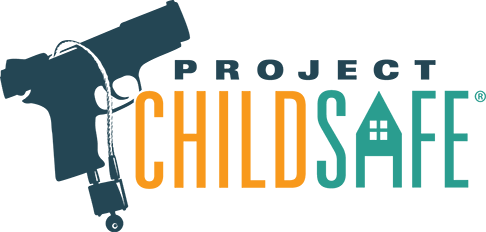Search
Cart
There are no items in your cart.
Login
Behind the Bargain: The Hidden Costs of Lowballing in the Firearms Industry

Lowballing is a pricing strategy where a seller offers products at slim profit margins, aiming to attract customers with seemingly unbeatable prices, drive high-volume sales, and jeopardize the health of the industry. While this tactic might seem to offer immediate savings, it often carries hidden trade-offs. The practice of lowballing isn't confined to just the numerous internet fraudsters; it also includes some legitimate sellers. These practitioners operate on a primitive, no value-add business model, effectively acting as industry parasites. Far from contributing constructively, their nearsightedness and lack of ecosystemic consideration undermine the industry's wellbeing and stability. As we turn our attention to the firearms industry, this article sheds light on how lowballing can lead to favoring high sales volumes and quick turnarounds over customer experience, thereby revealing the true cost behind these seemingly unbeatable prices.
The Unseen Trade-Off: Quality Customer Care
Chasing low prices often sacrifices customer service. To stay profitable with razor-thin margins, dealers may cut corners in customer service and experience. The fallout includes low-quality staffing, poor communication, and diminished support throughout the sales lifecycle. This can result in longer response times, insufficient information, limited assistance, and inadequate post-sale support, culminating in a customer experience that's both frustrating and disappointing.
The High Volume, Customer-Negligent Model
In their pursuit of high sales volumes and swift transactions, lowballing dealers often disregard customer care. Their primary focus becomes processing as many sales as possible, leading to hasty transactions and a conspicuous absence of personalized attention. More often than not, these dealers take on larger volumes than they can efficiently handle, which results in processing and shipping delays that can span weeks. This approach drastically favors sales volume over customer satisfaction, leaving customers with a product that falls short of their needs or expectations and an overall customer experience that is subpar. Further exacerbating the situation, post-sale support is frequently insufficient, forcing customers to grapple with any arising issues on their own.
Healthy Competition vs. Lowballing
It's important to distinguish between lowballing and healthy competition. In a competitive market, sellers vie for customers by offering better services, higher quality products, or more reasonable prices. These practices can lead to innovation, improved customer service, and overall industry growth. However, lowballing differs greatly from this. It's not about providing superior value, but about cutting corners and reducing the perceived value of products and services. Rather than fostering growth and improvement, lowballing encourages a race to the bottom, undermining industry standards and consumer trust.
.
The Unique Impact on the Firearms Industry
The firearm industry, with its emphasis on safety, quality, and reliability, can be particularly impacted by lowballing tactics. Here's why:
1. Safety and Quality: Firearms are not your typical consumer goods - they are products where quality and safety are paramount. In the face of lowballing, dealers may resort to sourcing and stocking firearms from less reputable channels, potentially introducing subpar products into their inventory to preserve profit margins. This practice not only compromises the quality of firearms but also heightens the risk of malfunctions and accidents, posing serious safety threats to end users.
2. Knowledgeable Staff: Firearms require specific knowledge and expertise to handle and operate safely. Lowballing could result in dealers hiring less qualified staff, leading to inadequate customer education about safe handling, maintenance, and proper usage of firearms. This could potentially lead to misuse and accidents.
3. Post-sale Service: Firearm ownership doesn't end with the sale. Many customers could benefit from a post-sale support that may include selecting appropriate accessories, addressing warranty issues with the manufacturer, as well as guidance on maintenance, repairs, and sometimes training. Lowballing may result in inadequate after-sales service, which could be crucial for the safe and effective use of firearms. This lack of support can leave customers feeling stranded and can potentially lead to misuse or mishandling of the firearm.
4. Market Perception: Lowballing can alter the perceived value of firearms. High-quality firearms, renowned for their craftsmanship, performance, and safety features, may be perceived as inferior goods when their prices are drastically reduced. This can not only destabilize the market but can also lead to a lack of appreciation for high-quality, safe firearms.
5. Trust and Reputation: Trust is vital in the firearms industry. Lowballing and the resultant cuts in customer service and potentially product quality can damage a dealer's reputation and undermine trust, which can have long-term detrimental effects on the dealer's business and the industry as a whole.
Lowballing, while initially enticing with the promise of savings, often conceals a host of hidden costs that can impact the buying experience, customer safety, and the overall health of the firearms industry. It's therefore vital for buyers to recognize these trade-offs and potential sacrifices involved when faced with seemingly unbeatable prices.
.
The Buyer's Role: Awareness and Due Diligence
Customers have a significant role to play in mitigating the negative impacts of lowballing. Being aware and practicing due diligence are key when navigating the firearms industry. Thorough research into the dealer's reputation, the firearm's origin, and the experiences of other customers is crucial. Remember, a price that hovers on the edge of reasonableness often carries hidden costs and trade-offs that may outweigh the perceived savings.
While the immediate savings offered by lowballing may seem appealing, the hidden costs, such as compromised customer service, a cumbersome, non-transparent sales lifecycle, and jeopardizing long-term industry health, reveal a different story. Buyers, armed with understanding these implications, can make more informed decisions, fostering healthy competition rather than a race to the bottom. By recognizing the hidden trade-offs and potential sacrifices involved when faced with seemingly unbeatable prices, buyers can contribute to a safer, higher-quality firearms market. Ultimately, the real cost of lowballing extends beyond the price tag, affecting the overall customer experience, safety, and the stability of the firearms industry.
NEWSLETTER










Leave a Comment